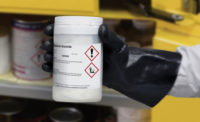EPA Releases Final Risk Assessment for Chemical used for Coatings Removal

WASHINGTON, DC – The U.S. Environmental Protection Agency (EPA) released the final risk assessment for n-methylpyrrolidone (NMP), a chemical commonly used to remove paint and other coatings. The assessment identified risks to pregnant women and women of childbearing age who have high exposure to NMP through paint or other coating removal.
Acute and chronic risks identified for women of childbearing age who use NMP for less than four hours per day may be reduced by use of specific types of chemical-resistant gloves. However, gloves and respirators do not adequately reduce risks to women of childbearing age who use NMP for more than four hours per day on a single day or repeatedly over a succession of days.
The NMP final risk assessment was developed as part of the agency’s Toxic Substances Control Act Work Plan, which identified chemicals for review and assessment of potential risks to people’s health and the environment.
NMP is a common alternative to methylene chloride, also known as dichloromethane, a chemical-based paint and coating remover. EPA has also identified risks associated with methylene chloride during the removal of paint and other coatings. For both NMP and methylene chloride, EPA is considering a range of voluntary and regulatory actions to reduce risks, and recommends finding safer coating removal chemicals, or taking precautions that can reduce exposures, such as using the product outside, in a well-ventilated area, and wearing proper gloves and respiratory protection.
Additional information on the NMP final risk assessment and other work plan chemicals can be found at http://www.epa.gov/oppt/existingchemicals/pubs/riskassess.html.
Looking for a reprint of this article?
From high-res PDFs to custom plaques, order your copy today!





